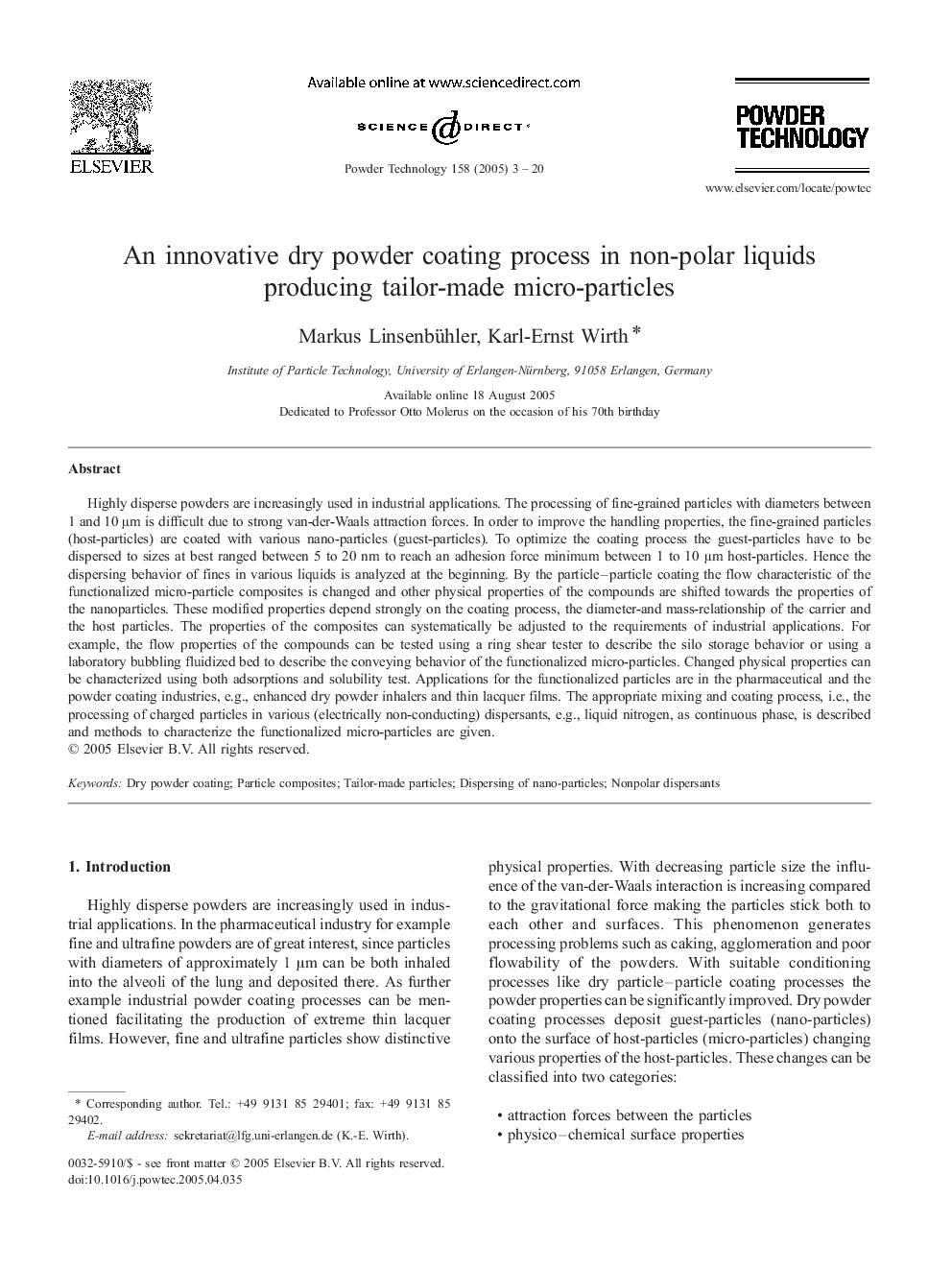| Article ID | Journal | Published Year | Pages | File Type |
|---|---|---|---|---|
| 9636427 | Powder Technology | 2005 | 18 Pages |
Abstract
Highly disperse powders are increasingly used in industrial applications. The processing of fine-grained particles with diameters between 1 and 10 μm is difficult due to strong van-der-Waals attraction forces. In order to improve the handling properties, the fine-grained particles (host-particles) are coated with various nano-particles (guest-particles). To optimize the coating process the guest-particles have to be dispersed to sizes at best ranged between 5 to 20 nm to reach an adhesion force minimum between 1 to 10 μm host-particles. Hence the dispersing behavior of fines in various liquids is analyzed at the beginning. By the particle-particle coating the flow characteristic of the functionalized micro-particle composites is changed and other physical properties of the compounds are shifted towards the properties of the nanoparticles. These modified properties depend strongly on the coating process, the diameter-and mass-relationship of the carrier and the host particles. The properties of the composites can systematically be adjusted to the requirements of industrial applications. For example, the flow properties of the compounds can be tested using a ring shear tester to describe the silo storage behavior or using a laboratory bubbling fluidized bed to describe the conveying behavior of the functionalized micro-particles. Changed physical properties can be characterized using both adsorptions and solubility test. Applications for the functionalized particles are in the pharmaceutical and the powder coating industries, e.g., enhanced dry powder inhalers and thin lacquer films. The appropriate mixing and coating process, i.e., the processing of charged particles in various (electrically non-conducting) dispersants, e.g., liquid nitrogen, as continuous phase, is described and methods to characterize the functionalized micro-particles are given.
Related Topics
Physical Sciences and Engineering
Chemical Engineering
Chemical Engineering (General)
Authors
Markus Linsenbühler, Karl-Ernst Wirth,
